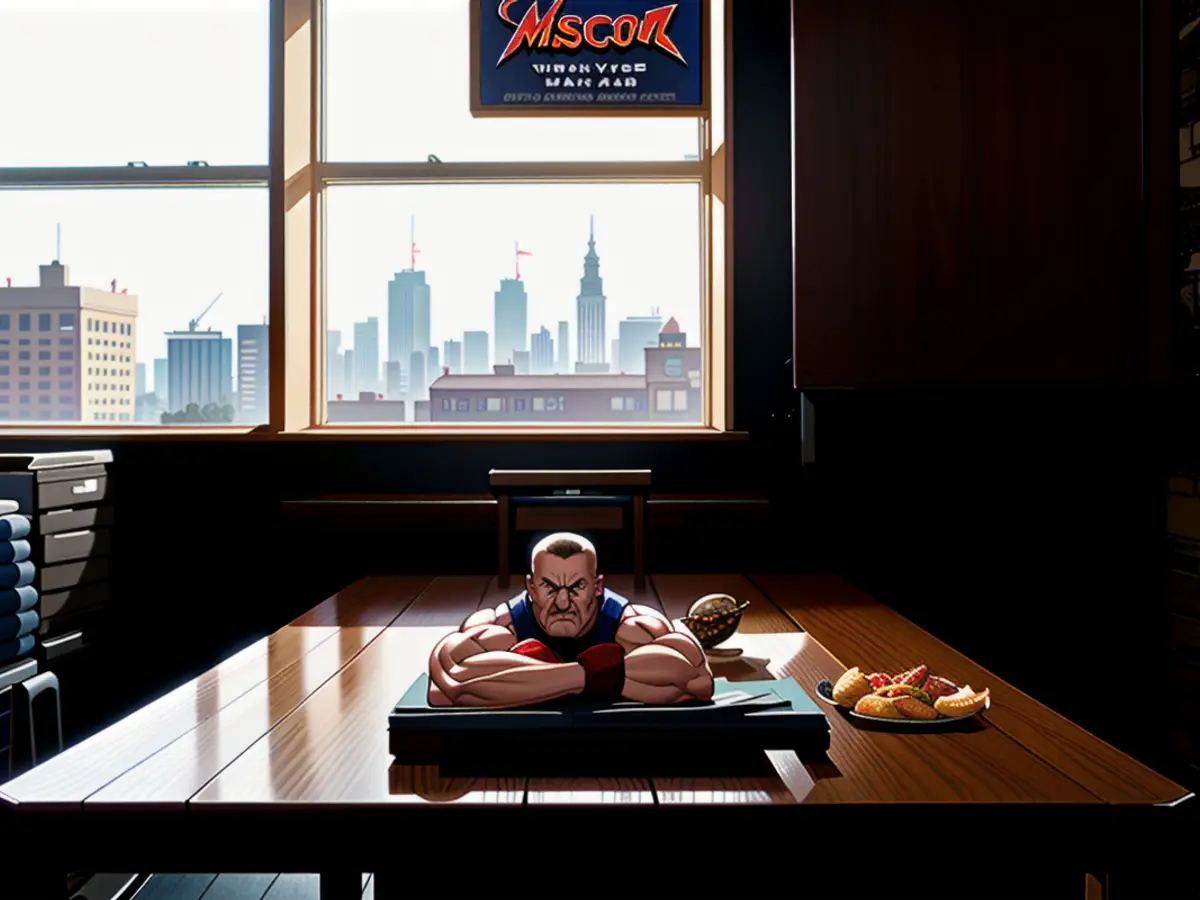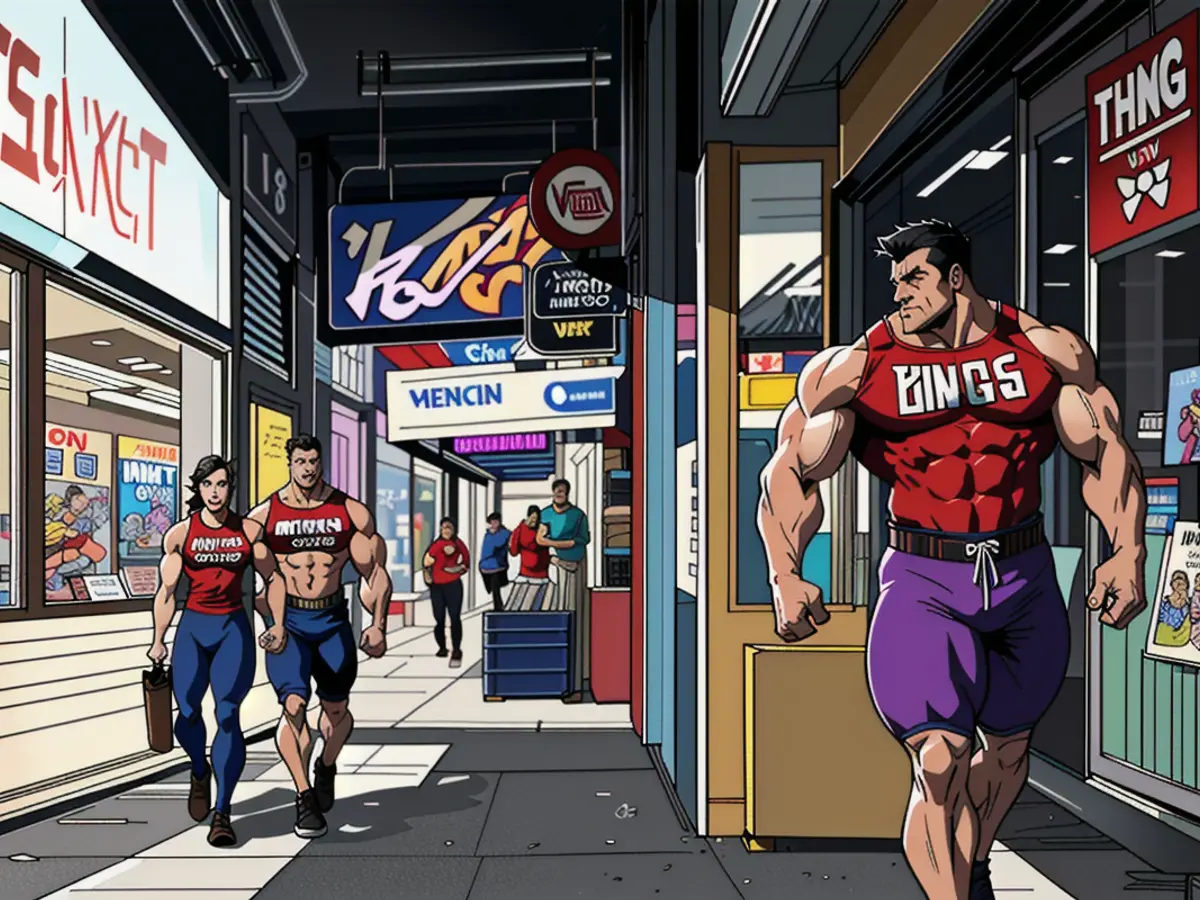It appears that numerous retail chains across America are facing closure.
U.S. retail giants announced over 7,300 store closures last year, an increase of 57% compared to 2023, as reported by Coresight Research. This marks the highest annual number of closures since 2020, when the pandemic led to widespread business disruptions across the country.
Familiar names in the American retail landscape, such as Family Dollar and CVS/Walgreens, shuttered numerous locations. Family Dollar closed 718 stores, while CVS and Walgreens combined closed over 1,000. Big Lots nearly had 600 stores close down. LL Flooring closed for good, and Party City began liquidation processes. The Container Store filed for bankruptcy and may have to close some of its 100 outlets.
Restaurant chains also experienced shrinkage during this period. Establishments like Red Lobster and TGI Fridays filed for bankruptcy, while Denny's and Applebee's announced significant store closures.
There isn't a definitive reason why these establishments closed in 2024. However, they share some common issues. They all were impacted by the highest inflation in four decades and faced competition from larger and better-positioned rivals. Moreover, several made questionable choices, such as overexpansion or slow adaptation to online shopping.
Deborah Weinswig, CEO of Coresight Research, stated, "Price-sensitive consumers are seeking the best deals online and losing patience with stores that lack inventory, have poor customer service, and other issues, causing them to shop elsewhere."
This trend in store closures gained momentum as the retail sector's 2020-2022 boom, largely due to pandemic-related demand, came to an end. During the early pandemic years, consumers purchased an abundance of furniture, electronics, and clothing. However, as prices soared and interest rates increased, making credit more expensive, consumers reached their breaking point and reduced unnecessary purchases, impacting the struggling businesses.
Amazon, Walmart, Costco, Home Depot, and Temu intensified competition for mid-sized chains like Family Dollar and Big Lots. These larger retailers can purchase goods in larger quantities at a steeper discount, and they have the financial capacity to invest in technology and store improvements that smaller competitors cannot match.
The surge in store closures in 2024 echoes the pre-pandemic trend when retailers regularly closed thousands of stores each year as online shopping grew rapidly. By the beginning of 2020, online sales accounted for approximately 12% of total retail sales, with this figure rising to 16% in 2024.
Retailers shut down a combined total of 13,400 stores in 2017 and 2018. In 2019, retailers closed a record 9,800 stores. Businesses like Payless, Gymboree, Charlotte Russe, and Shopko filed for bankruptcy that year.
The pandemic in 2020 accelerated the closing of weaker chains, such as Sears, JCPenney, Pier 1, and others. Over 9,700 stores were closed in 2020.
Chains that managed to survive the pandemic saw a boost in 2021 and 2022 from additional federal stimulus payments and consumer enthusiasm on shopping expeditions. However, this surge proved to be short-lived.
Retailers that were faltering before the pandemic are once again struggling as high interest rates escalate debt repayments and price hikes strain many consumers. Inflation has returned to normal levels, but overall expenses remain around 20% higher than in 2020. Due to skyrocketing interest rates, consumers are now paying more for their automobiles, homes, and credit cards each month, leaving less disposable income for non-essential purchases.
The Container Store serves as an example of a company returning to pre-pandemic fortunes. In 2021, the Container Store saw record sales and profits due to the extreme confinement of consumers at home.

However, the Container Store proved susceptible to housing market changes. Mortgage rates reached 20-year highs near 8% in 2024 and remain near 7% currently. High interest rates have dampened interest in home buyers and sellers, resulting in a stagnant real estate market, which in turn negatively impacted the Container Store.
Consumers on the hunt for bargains and tightening their belts after years of companies raising prices also impacted the Container Store. Its core middle-income clientele sought discounts and abandoned the store's profitable niches, such as consultations and premium services. Richer consumers are also cutting back and opting for less costly alternatives.
The Container Store filed for bankruptcy just days before Christmas.
Smaller discount retailers, catering to lower- and middle-income shoppers, also experienced setbacks.
Family Dollar faced difficulties as its core low-income consumers struggled to afford essentials and reduced their spending or switched to Walmart, where they had already been purchasing groceries.
Other discount chains faced similar obstacles: Big Lots declared bankruptcy in September and closed multiple stores. The company secured a last-minute deal to keep its remaining 900 stores operating. 99 Cents Only permanently ceased operations and closed 371 stores.
Pharmacy chains are shrinking too. CVS, Walgreens, and Rite Aid have announced over a thousand closures collectively this year, as per Coresight's reports.
During the 90s and 00s, these chains expanded dramatically to outpace competitors and attract more customers. However, they failed to anticipate the steep decline in prescription drug reimbursement rates and the encroachment of competitors like Amazon, Walmart onto their snack and household supplies sales, which formed a major part of their revenue.
"Retailers who lacked financial stability, unique offerings, or forgot about customer service faced challenges," said Greg Portell, a Kearney senior partner.
Retail isn't extinct
These trends are likely to persist until 2025, especially if President-elect Donald Trump implements substantial tariffs.
Trump has threatened to impose 25% tariffs on Mexican and Canadian products, as well as an extra 10% on Chinese goods. Tariffs are taxes imposed on imported goods to safeguard domestic producers. Companies that import goods have to pay these taxes, which often gets passed on to consumers in the form of higher prices.

"Brace yourself for further erosion of the middle market," warned Portell.
However, retail isn't vanishing altogether. Successful chains will seize the opportunity to occupy unoccupied retail and restaurant spaces.
Major chains announced over 5,800 store openings last year, a 6.5% increase from 2023. Many of these new businesses cater to bargain-seekers.
Aldi, the German discount supermarket chain, announced plans to open 126 new stores across the US, as part of a $9 billion expansion strategy to capture the bargain-shopping market.
Discount clothing stores like TJ Maxx, Burlington, and Ross Stores are thriving. These chains undercut department stores like Macy's and Kohl's by offering designer brands at lower prices.
TJX, TJ Maxx, Marshalls, and HomeGoods' parent company, announced 99 new stores last year. Burlington announced 140 new stores. Ross opened 89 new stores last year.
Economists and businesses caution that Trump's tariff proposals could disrupt supply chains and boost prices for consumers. However, TJX believes that these tariffs could give it a competitive advantage by providing it with discounted designer goods as companies rush to import goods early to dodge tariffs. TJX sees an opportunity in the uncertainty caused by Trump's tariffs.
"Manufacturers may import goods early," said TJX CEO Ernie Herrman during an analyst call. "This could lead to even more affordable products for us."
Even some brands that seemed close to extinction are making a comeback.
Barnes & Noble opened 60 new stores last year, as customers showed a preference for buying books from physical bookstores.
J.Crew, which filed for bankruptcy in 2020, opened 34 stores last year and reintroduced its catalog. J.Crew has capitalized on Millennials' nostalgia for the brand and tapped into Gen Z's fashion sensibilities.
So, while the retail apocalypse isn't entirely avoidable, savvy brands have discovered ways to make physical stores attractive again.

The increased competition from larger retailers like Amazon, Walmart, Costco, and Home Depot is putting pressure on mid-sized chains such as Family Dollar and Big Lots. These larger retailers can purchase goods in larger quantities at lower prices and invest in technology and store improvements that smaller competitors cannot match.
The pharmacy chain CVS has announced closures this year, joining Walgreens and Rite Aid in reducing their store count. These chains expanded during the 90s and 00s but failed to anticipate the decline in prescription drug reimbursement rates and the encroachment of competitors.





